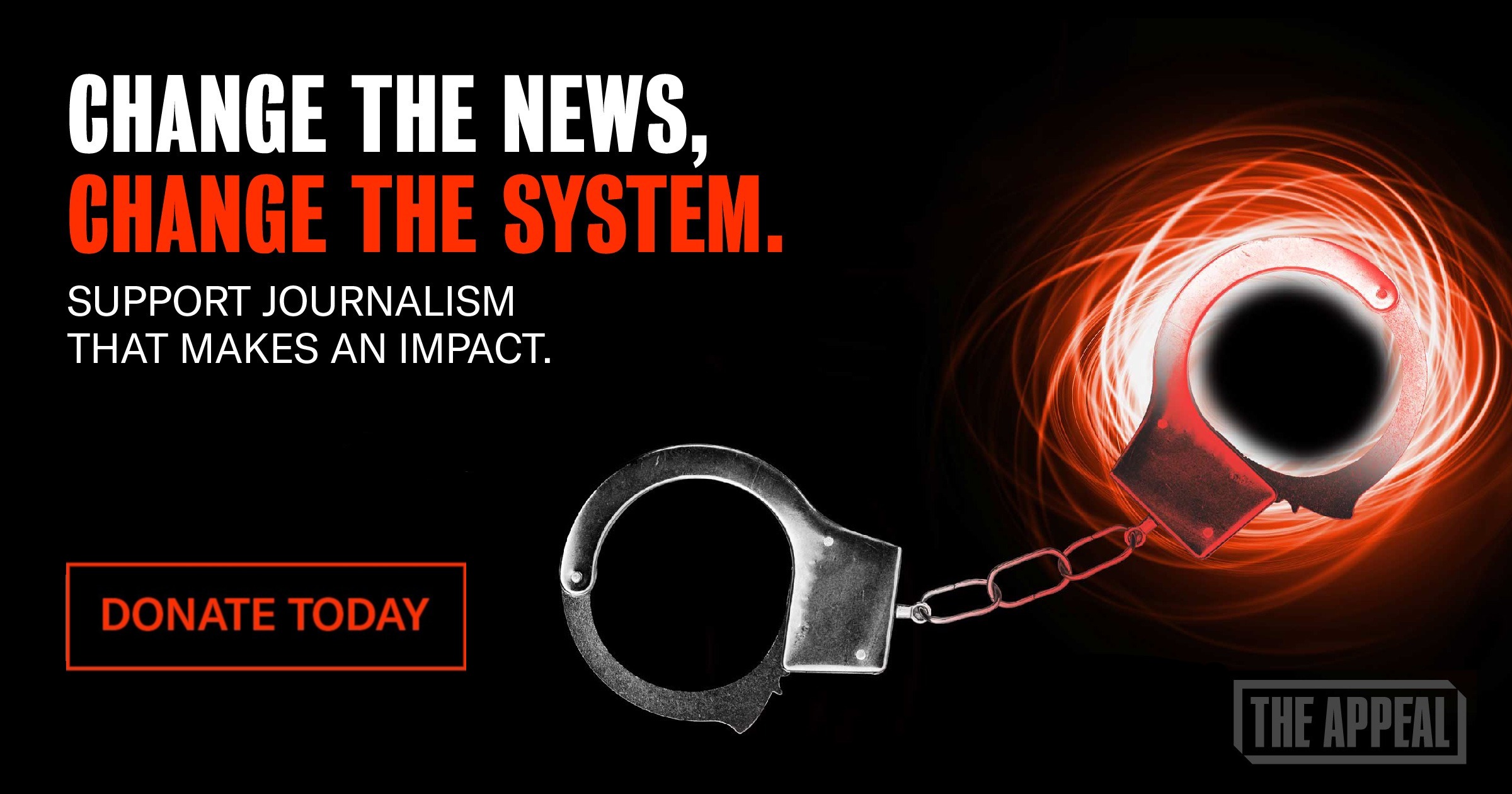They Served Their Time. But They May Still Die in State Custody.
In half the country, sex offense civil commitment incarcerates people after they complete their prison sentences.

Eliseo Padrón is a 50-year-old Mexican American man from St. Paul, Minnesota. Padrón told The Appeal he grew up surrounded by gang culture. He spent his early adulthood in and out of prison.
“Living that lifestyle led to me doing a lot of things that I regret,” Padrón says. He was convicted of first-degree criminal sexual conduct in 1995.
After he violated his parole terms by returning late to the halfway house in 2012, the state sentenced Padrón to the Minnesota Sex Offender Program (MSOP), a “treatment” facility operated by the Department of Human Services. The building shares a campus with the Moose Lake prison, complete with sally ports and razor wire.
Moose Lake is one of two facilities where Minnesota holds people indefinitely, long after their prison sentences have finished, and often for the rest of their lives. Minnesota, along with 19 other states, the District of Columbia, and the federal government, allows for the civil commitment of people convicted of sex offenses after they’ve completed the terms of their incarceration.
“The environment here consistently produces no hope, you know what I mean? And the hope that they do give, they weaponize,” Padrón says. This hopeless environment results in harm; Padrón was stabbed 11 times in a fight.
MSOP opened in 1995. For the next 20 years, the program did not release a single person. Almost a hundred people, however, have died inside. Ruby Brewer, a therapist who resigned after three years working at MSOP, told The Appeal that staff sometimes refer to the deaths of the people confined there as “graduations.” The releases have since come, albeit slowly, only after a class-action lawsuit and other forms of activism. At the beginning of his time at MSOP, Padrón did the programs, but he says, “I quickly began to realize that programming here was futile.” That’s why, since 2021, he’s been organizing with a group called End MSOP to abolish civil commitment in Minnesota and elsewhere.

Nationally, more than 6,000 people are held in sex offense civil commitment, according to a 2024 report from the Prison Policy Initiative. While the states that run such programs say they’re focused on rehabilitation, critics have long said the systems seem to be a thinly veiled way to warehouse people instead of treating them. Such programs have long been called untransparent and stacked with draconian release conditions. Furthermore, studies have shown that sex offense civil commitment does not prevent sexual violence.
Eric Janus, Director of the Sex Offense Litigation and Policy Resource Center at Minnesota’s Mitchell Hamline School of Law, told The Appeal the current set of civil commitment laws stems from a decades-old moral panic about sexual norms and orientations.
“Back in the late 30s and 40s, a bunch of states adopted so-called psychopathic personality or sex psychopath laws,” Janus says. “But unlike the current laws, they were viewed as an alternative to criminal punishment.”
These laws, mainly aimed at sexually non-conforming people who had not necessarily committed any violence, faded away within a few decades. But in the late 1980s and early 1990s, feminists increasingly called for an end to sexual violence while mass incarceration boomed. Politicians responded by creating the contemporary system of sex offense civil commitment. Janus argues that the system is a way for politicians and elites to respond to the increased visibility of sexual violence in this period, while still refusing to acknowledge any of the feminist analysis that strangers do not perpetrate most sexual violence. The spirits of the mass incarceration and “gay panic” eras live on: Studies have shown that Black men who have harmed other men are more likely to be sent to civil commitment than other groups.
Some states make more use of the statute than others. Minnesota holds the highest number of people in the system per capita, while California has the most overall. The systems’ populations also balloon due to their low release rates.
The laws’ political nature mean that commitment rates vary wildly from year to year and state to state. In Minnesota, Janus says there has been a “huge variation in the number of people committed each year. I don’t know of any other state that’s had that kind of wild variation of implementation.”
In Minnesota, a judge must determine whether to commit someone. However, advocates say many people agree to the program willingly while waiting for trial, often acting on bad advice from lawyers seeking to win a judge’s favor. Once a person has stipulated to civil commitment this way, there is typically no easy way out.
Critics note that little “treatment” actually occurs. Across the United States, therapeutic time is as low as 15 hours a month, with few other programs or activities to fill the remaining time. Multiple people told The Appeal that the therapy they received in prison was superior to what states offer in civil commitment.
“There’s no kind of direction here,” says Mikael Miller, another person confined in the Moose Lake facility. Miller attests to receiving better programming in the prison.
For this, states such as Minnesota spend $110 million per year—around three times the per-person cost of prison. The state spends only $2 million annually on all other sexual violence prevention.
A 1997 U.S. Supreme Court case held that civil commitment is legal so long as it constitutes treatment, rather than punishment. To be eligible for even supervised release, “clients” must complete several programming tiers that rely on staff evaluations to progress. Former employees across the United States, including those who spoke to The Appeal, have alleged that institutions put pressure on staff to keep scores low.
People who’ve experienced the programs say they emphasize minor infractions or rule violations as supposed symptoms of antisocial behavior. As a result, relatively minor offenses can result in major punishments, such as being sent back to Tier 1, which erases years of work. Janus warned that these programs let states lock people up not for conduct they’ve committed, but for their potential to create crimes in the future. In addition to being unjust, the tools and logic used to predict who will commit sexual violence are deeply flawed and unreliable.
Jennifer L. Williams, whose son is held in the Texas Civil Commitment Office (TCCO), says that at first the facility seemed “a thousand times better than prison” to her son.
“‘Oh, I get to wear my own clothes and I get a PlayStation,’” she recalled him saying. “Everything seems really good in the beginning.”
But it quickly became clear this was prison by another name. TCCO can send people to solitary confinement with no communication privileges or books to read. Williams said that to progress from Tier 4 to Tier 5 in Texas, a person must save up $10,000 purely from working inside the facility—a daunting task given the program’s minuscule pay rates.
Conditions are similar to prisons in other ways, including aging populations and a lack of adequate healthcare. Several people who spoke to The Appeal pointed out that there’s no way to age out or achieve compassionate release. Men with dementia must instead complete therapeutic coursework, an unreasonable and often impossible barrier to cross.
Guards and employees are allegedly hateful and racist. Brewer says that she’s “seen firsthand” how “staff hate every single one of them.” Padrón says white staff have threatened to “George Floyd” prisoners. And Miller said that he’s heard employees say all trans people should be killed.
The institution’s opaque nature makes it harder for those inside to communicate with their loved ones and increases the chances for retaliation. Sex offense civil commitment facilities, which in Minnesota, Texas, and many other states are run by the human-services departments instead of prison systems, often lack the basic e-messaging communication afforded to people in prison.
Williams says she hasn’t been able to communicate with her son for almost a year. The facility blocked all forms of contact when she refused to complete sex offender therapy for herself to fix what the state says was a “codependent relationship” with her child.
The same thing happened to Lonnell Hanks, another mother in Texas, who laughed bitterly at the idea that the state tried to force her into an undefined amount of sex offender treatment at her own expense.
“But I’m a troublemaker,” Hanks says, describing how the family is fighting to defend their civil rights against TCCO. “My son’s a big troublemaker.”
Last summer, Padrón organized a memorial service in his facility’s yard to commemorate people who’ve died inside. He says MSOP punished him for doing so. Facility rules prohibit criticizing MSOP and claim such actions “compromise the therapeutic environment.”
Padrón’s work with End MSOP includes fighting at the legislative level to close the program and to raise awareness among those imprisoned about the pitfalls of agreeing to the program before it is too late.
In Texas, Williams and Hanks organize with a group called Families Against Committing Texans Stand Up (FACTS). Both women, who spend enormous amounts of time lobbying their state legislature and testifying before committees governing TCCO, stress that the system needs to change. Williams says that, instead of making people safer, the system just creates “new victims,” including family members like her. Both End MSOP and FACTS are part of a national network of state-level campaigns.
Padrón and Miller say they know they most likely won’t be released without major system overhauls. Parents of children committed in Texas and Kansas told The Appeal they believe their children will only be released when the programs are abolished.
Despite his bleak outlook, Padrón says he finds meaning in his work with End MSOP.
“They’re not going to deter me from doing what I’m doing,” Padrón said of his state’s commitment program. “And in embracing that, there’s a certain type of freedom that comes from it. You can’t do anything more to me. I know the end.”
The activism seems to be having a slow impact. In a Minnesota court case last year, a state judge wrote that the pleas of “MSOP patients who have meticulously documented what it feels like to live in the shadow of hopelessness” should no longer be ignored.
“A policy solution,” the judge added, “is long past due.”
